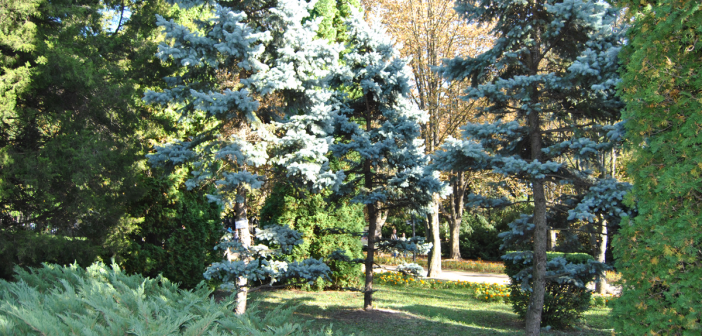Happy Arbor Day! In 1854 a pioneer named Julius Sterling Morton traveled with his family from Detroit to the Nebraska Territory to settle there. Compared with the forested hills, tree-lined lakes and cedar swamps back in Michigan, Nebraska’s open landscape appeared barren. Morton was a nature lover and journalist. He and his family planted trees to brighten their new western surroundings, as well as to use for practical purposes around the homestead. He became editor of a Nebraska newspaper, and through his occupation was able to spread agricultural news to the new settlements there. Pioneers were encouraged to plant trees for shade from the hot prairie sun, for fuel and new construction, and for windbreaks.

I planted a Norway spruce this year. This evergreen is disease resistant and makes a tall, sturdy windbreaker. It likes plenty of sun and grows fast.
In 1872, Arbor Day was first recognized and continues to be a reminder today of the value inherent in the simple act of planting a tree. With that in mind, consider planting a tree this weekend! First figure out whether you want a tall tree or something shorter, deciduous or coniferous, a fruit tree or something more ornamental for your landscaping. Do you mind raking leaves? If not, try a red or silver maple or an oak. They are shade tree favorites. Would additional privacy from your busy road be a plus? Try the American arbor vitae or emerald arbor vitae, or the taller white pine, all of which grow fairly quickly. Arbor vitae are pyramidal in shape and easy to care for.
Do you hope to one day pick some fruit from your tree? There are many popular varieties of fruit trees for Michigan backyards, like golden delicious, pear and plum. Would you like to give the birds some extra cover when they swoop in for the feeder? Try cedar or birch. Washington Hawthorne, which develop red berries, and crabapple trees offer bird-loving perches. Maybe you’d just like a little shade on the west side of the house or something to block the winter wind gusts. Spruce trees are a favorite, usually growing nice and thick and making a good windbreak and place for birds to nest. Whatever your hopes are for adding a new tree to the yard, try not to crowd the trees close together.
You’ll want to have a good idea of how tall and how wide the tree is expected to grow before you plant it. It may seem obvious, but a lot of people don’t think much about its growth potential before plopping the tree in the ground. Give larger trees plenty of extra space and avoid placing them too close to the house or driveway, or beneath power lines. Many well-intentioned homeowners who planted large trees too close to the house have dealt with the expense of property damage clean-up from broken limbs later on. Roots can also displace the soil around the foundation. If you want to add a splash of color and pizzazz near your house, consider a small species like Japanese red maple, weeping hemlock and dogwood.
Once you pick the perfect type of tree, dig a hole that is two to three times bigger than the size of the burlap-wrapped root ball. The Arbor Day Foundation recommends that the sides of the hole should be sloped and the soil at the bottom of the hole undisturbed. Trees that come in containers might appear rootbound. If that’s the case, cut an X across the bottom of the root ball and four vertical slices along the sides of the root ball with a sharp knife. Some trees like spruce may be received bare-rooted; these are best planted in early spring in fairly wide holes. Give them plenty of water too.
Enjoy choosing and planting a tree for Arbor Day 2015!














